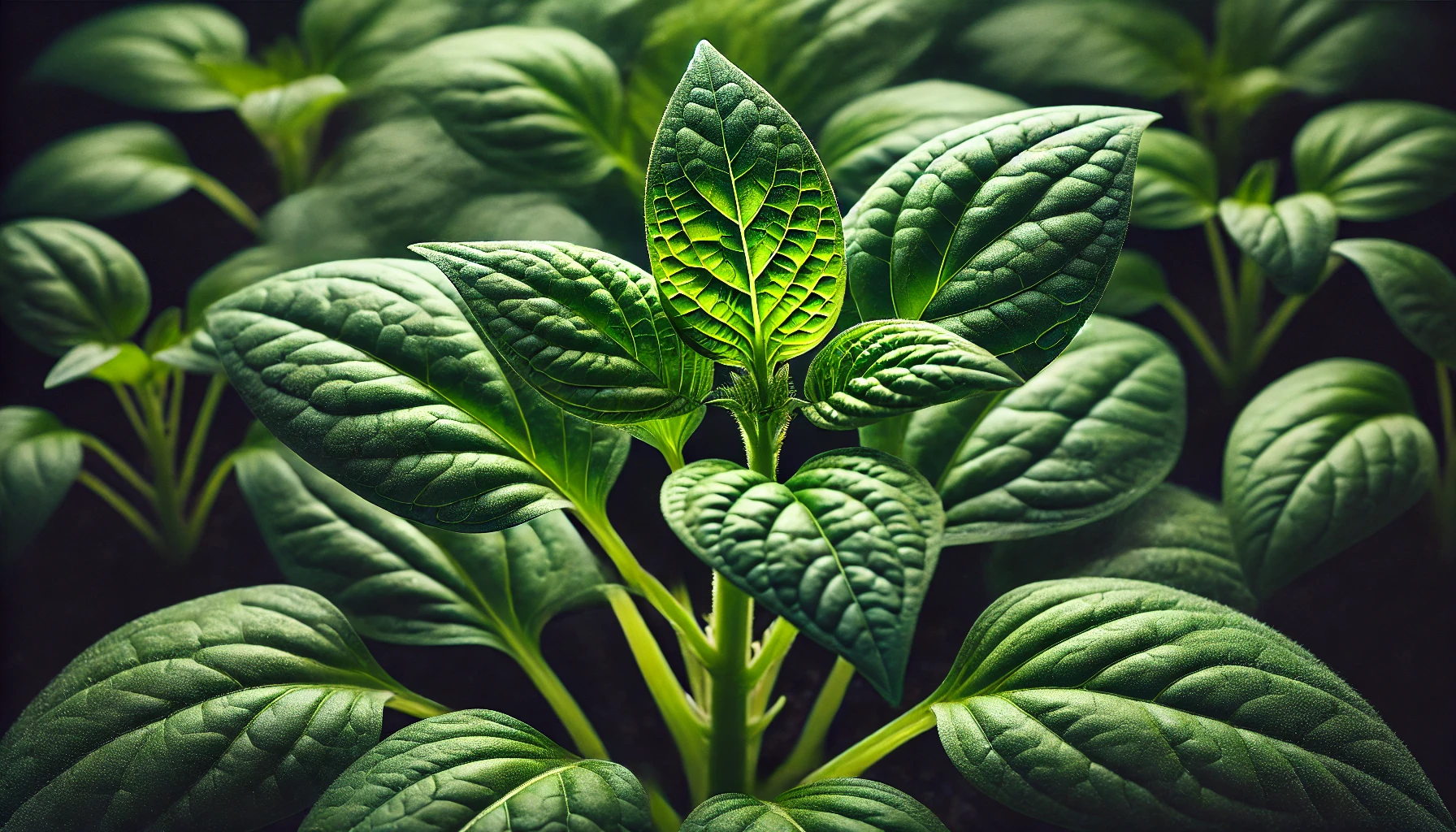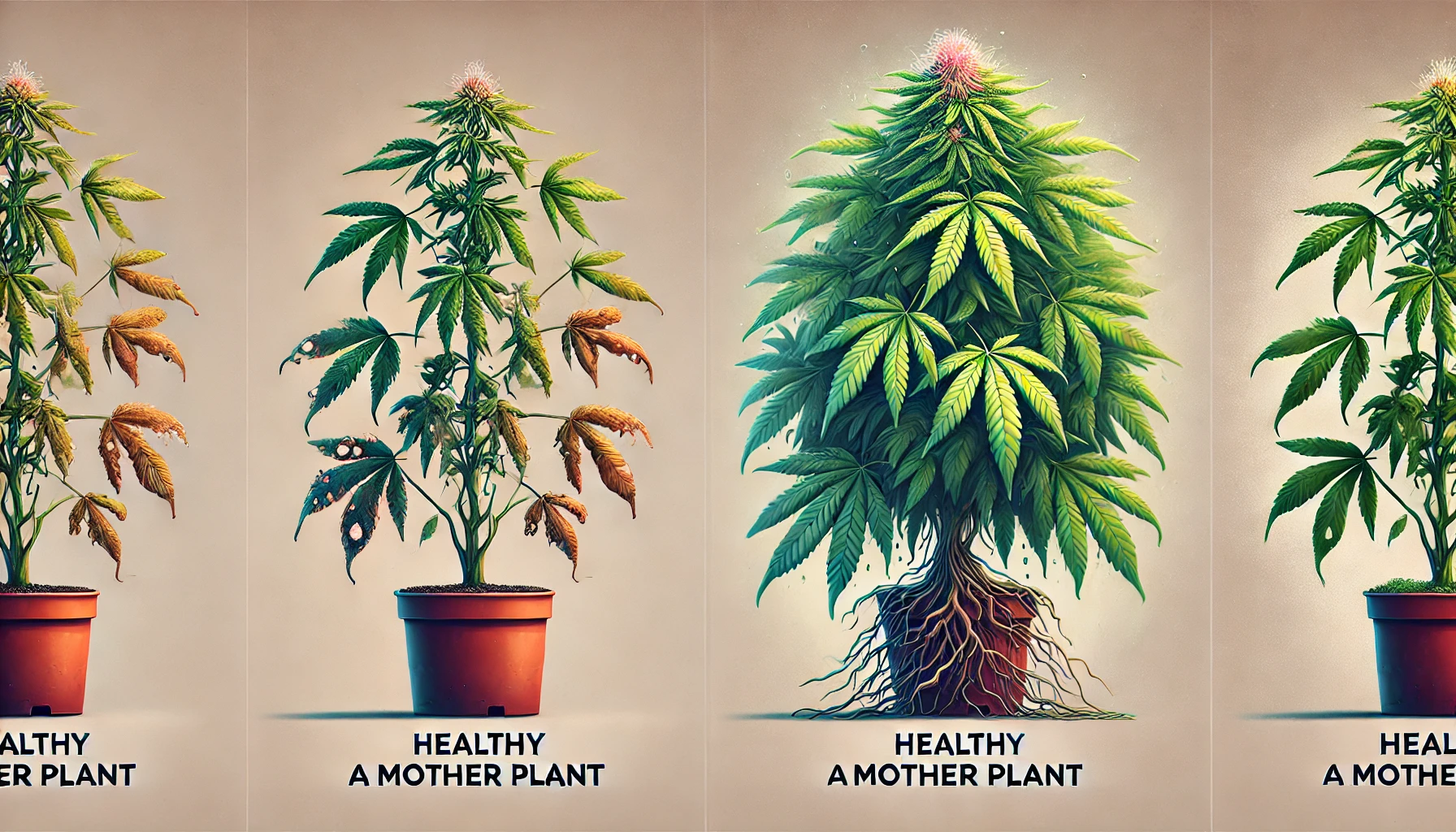
Choosing Healthy Mother Plants: Expert Tips for Strong, Thriving Plants
When it comes to growing a garden full of healthy, vibrant plants, everything starts with choosing healthy mother plants. These are the foundation of your garden, whether you’re growing from cuttings, grafting, or propagating. By selecting strong, disease-free mother plants, you’re setting yourself up for success and ensuring your future plants will thrive. But how do you identify the right one? In this article, we’ll explore expert tips on choosing healthy mother plants, helping you make informed decisions that lead to strong, thriving plants for years to come. Let’s dive into the essential qualities you should look for in a mother plant!
Table of Contents
ToggleWhat Are Mother Plants?
A mother plant is a healthy, mature plant specifically kept for propagation purposes. These plants serve as the source from which cuttings, seeds, or other plant parts are taken to grow new plants. They are typically strong, vigorous, and disease-free, ensuring that the offspring they produce are of the highest quality.

Mother plants are crucial for gardeners, horticulturists, and plant enthusiasts who want to multiply their plants or preserve specific varieties. By keeping a mother plant, you can ensure consistency in the traits of the new plants, whether it’s the color of the flowers, the size of the fruit, or the overall hardiness.
In simple terms, a mother plant acts as the “parent” from which new plants are cloned or propagated. They play a key role in maintaining plant varieties, especially in situations where seed-based propagation is less reliable or desirable.
Why Choosing Healthy Mother Plants Matters
When starting a garden or propagating plants, the quality of your mother plant is crucial. A healthy mother plant provides strong, vibrant offspring with the best chance for survival and growth. Here’s why selecting a healthy plant makes all the difference:
Stronger Root Systems: Healthy mother plants have robust roots, which are essential for transferring nutrients to their cuttings or seeds. Plants grown from strong roots are more likely to develop strong, resilient root systems themselves.
Better Disease Resistance: A healthy plant is less susceptible to diseases and pests. By choosing a healthy mother plant, you ensure that the offspring are less likely to inherit common issues, leading to healthier plants down the road.

Faster Growth: Starting with a well-maintained mother plant leads to quicker propagation. Strong genetics, paired with a healthy growing environment, ensures that new plants grow faster and with fewer setbacks.
Improved Plant Quality: The characteristics of the mother plant—whether it’s flower color, leaf shape, or fruit size—are passed down to the new plants. Choosing a healthy, vibrant mother plant ensures that these desirable traits are preserved, leading to better-quality offspring.
Higher Success Rate: Propagating from a strong, healthy plant increases your chances of success. Healthy plants are better at adapting to changes, offering a smoother propagation process and reducing failure rates.
In summary, selecting a healthy mother plant is key to ensuring strong, disease-free, and fast-growing plants. It sets the foundation for success, making your gardening efforts much more rewarding.
Key Characteristics to Look for When Choosing Healthy Mother Plants
When selecting a mother plant for propagation, it’s essential to choose one that is healthy, vigorous, and free from pests or diseases. Below are the key characteristics to look for to ensure you pick the best plant for successful cloning or cutting.
Vibrant Green Leaves Healthy mother plants have lush, vibrant green leaves without any discoloration or spots. Yellowing or browning leaves indicate stress or nutrient deficiencies, which can affect the quality of your cuttings. Look for uniform, strong foliage, as this reflects overall plant health.

Strong, Sturdy Stem The stem should be firm and free of cracks, mushiness, or visible damage. A weak or spindly stem suggests poor growth or improper care. Sturdy stems indicate a well-established plant that can support new growth from cuttings.
Absence of Pests and Diseases Always inspect your plant carefully for any signs of pests (such as aphids or spider mites) or fungal diseases (like mildew). Check both the top and underside of the leaves, as well as around the roots. A healthy plant will not show these harmful signs.
Proper Root Health If possible, examine the roots of the plant. Healthy roots are white or light-colored and firm to the touch, indicating the plant is actively growing. Avoid plants with discolored, mushy, or decayed roots, as they won’t propagate successfully.
Age and Growth Stage Choose a plant that is in its prime growth stage—neither too young nor too old. A plant that’s too young may not have enough mature growth for effective propagation, while an older plant may struggle to root or grow new shoots. A plant with ample new growth is ideal for taking healthy cuttings.
Balanced Growth Look for a plant that exhibits balanced growth, with even branching and no signs of overcrowding. Overcrowded or leggy plants often have weak growth, which can make cuttings less viable.
By focusing on these characteristics, you can ensure that your mother plant is strong, healthy, and capable of producing quality cuttings or clones. This increases your chances of successful propagation and healthy new plants.
How to Inspect Your Mother Plant
Inspecting your mother plant is essential for ensuring its health and longevity. Here’s a step-by-step guide on how to do it effectively:
Examine the Leaves: Look for any discoloration, wilting, or signs of pest infestation like holes or sticky residue. Healthy leaves should be vibrant and firm.
Check for Pests: Inspect the undersides of leaves and stems for common pests such as aphids, mealybugs, or spider mites. Use a magnifying glass if needed.

Look at the Soil: Ensure the soil is not waterlogged or dry. It should be slightly damp, never soggy. If you notice mold or fungi, it could indicate poor drainage or overwatering.
Inspect the Roots (if possible): If you’re repotting or trimming, gently remove the plant from its pot and check the roots. Healthy roots should be white or light-colored and firm. Brown or black roots may be a sign of root rot.
Evaluate Growth Patterns: Healthy mother plants should have consistent growth. Check for any stunted or uneven growth, which could signal nutrient deficiencies or environmental stress.
Regularly inspecting your mother plant ensures you catch potential issues early, giving you a better chance to fix problems before they affect the entire plant.
The Best Time to Choose a Mother Plant
When deciding the best time to choose a mother plant for propagation, timing is crucial to ensure healthy growth and successful propagation. Here are the key considerations for selecting the right time:
Spring or Early Summer: This is the ideal period to choose a mother plant. During these seasons, plants are in their active growth phase, making them more robust and capable of producing strong cuttings. The warmer temperatures and increased sunlight provide optimal conditions for rooting.

Healthy Growth: Choose a mother plant that is healthy, free of diseases, and pest-free. Avoid plants that are stressed, weak, or flowering as they might have diverted energy from their roots and leaves, which could hinder successful propagation.
Avoid Winter Months: While it’s possible to propagate in the colder months, it’s less ideal as plants are in a dormant phase. Propagating during winter often leads to slower growth and reduced success rates.
After a Growth Spurt: Wait for the plant to finish a growth spurt before selecting it as a mother plant. At this time, the plant has ample energy stored to support new growth from cuttings, leading to stronger, more vigorous offspring.
By choosing the right season and ensuring your mother plant is healthy, you’ll improve the chances of successful propagation, making it a worthwhile investment of time and effort.
How to Care for Your Mother Plant
Caring for your mother plant is essential to ensure healthy offspring and continued growth. A mother plant is a reliable source for cuttings, and providing the right care will help it thrive and produce strong, healthy shoots.
Choose the Right Location Ensure your mother plant is placed in a location that meets its light, temperature, and humidity needs. Most plants prefer bright, indirect light, but always check the specific requirements for your plant type. Keep the temperature consistent, avoiding drafts or extreme temperature changes.
Watering Schedule Water your mother plant regularly, but be careful not to overwater. The soil should be slightly dry before watering again. Use well-draining soil to prevent water from accumulating at the roots, which can lead to rot.
Pruning and Maintenance Prune your mother plant to keep it healthy and encourage growth. Remove any dead or yellowing leaves, and trim back any leggy stems to promote fullness. Regular pruning also helps prevent pests from taking hold.

Fertilization Fertilize your mother plant every 4-6 weeks during the growing season with a balanced fertilizer. This will provide the necessary nutrients for healthy growth. Reduce fertilization during the plant’s dormant period.
Repotting If your mother plant outgrows its pot, repot it into a slightly larger container. This ensures its roots have enough space to grow and prevents the plant from becoming root-bound. Repotting should be done every 1-2 years, depending on the growth rate.
Pest and Disease Prevention Regularly check your mother plant for pests like aphids, mealybugs, or spider mites. If you spot any, treat the plant with natural pest control methods or a mild insecticidal soap. Keeping your plant healthy will help it resist diseases and pests.
With these simple tips, your mother plant will stay strong, producing healthy cuttings and serving as a source of beauty and growth for your garden.
Common Mistakes to Avoid When Choosing Mother Plants
Choosing the right mother plant is crucial for successful propagation. Here are some common mistakes to avoid when selecting your plant:
Ignoring Plant Health
A healthy mother plant is the foundation for strong cuttings. Avoid choosing a plant with visible diseases, pests, or stress signs. A plant that is struggling will pass on weak traits to the new plants.

Selecting a Plant that’s Too Young or Too Old
Young, immature plants may not have developed strong growth yet, leading to less successful cuttings. On the other hand, very old plants may have limited vitality. Look for a plant that is mature but not aging.
Not Considering Growth Habit
Some plants are naturally bushy, while others are more leggy. Understand your plant’s growth habit before selecting it as a mother plant. This will affect how easy it is to take cuttings and their success rate.
Overlooking Environmental Conditions
Every plant has specific needs. Ensure that your mother plant thrives in conditions similar to where you intend to propagate it. A plant that isn’t suited to its environment may not provide the best cuttings.
Choosing Over-Exposed Plants
Avoid selecting plants that have been overexposed to sun or extreme temperatures. These plants are stressed, making them poor candidates for producing viable cuttings.
By being mindful of these mistakes, you’ll ensure a stronger, more successful propagation process, leading to healthier, more resilient plants.

Choosing healthy mother plants is a crucial step in ensuring the success of your garden or plant propagation projects. By selecting plants that are strong, disease-free, and well-maintained, you set yourself up for thriving offspring that will grow into vibrant, resilient plants. Remember to inspect your potential mother plants carefully, look for key signs of health, and avoid common mistakes. With these expert tips in mind, you can confidently choose the best plants to propagate, giving you a garden full of healthy, flourishing greenery. Happy gardening, and may your plants grow strong and thrive!
Frequently Asked Questions(FAQ)
What is a mother plant?
A mother plant is a mature, healthy plant from which cuttings, grafts, or other types of propagation are taken to grow new plants. These plants are carefully selected to ensure the offspring inherit strong growth and disease resistance.
Why is choosing healthy mother plants important?
Choosing healthy mother plants ensures that the new plants will be strong, disease-free, and able to thrive in their environment. A healthy mother plant provides the best genetic material for propagation, leading to better growth and higher success rates.
How can I tell if a mother plant is healthy?
Look for vibrant, green leaves, strong stems, and a well-established root system. Check for any signs of pests, diseases, or physical damage. A healthy plant will also have a balanced shape and will not appear leggy or stunted.
What are the common signs of an unhealthy mother plant?
Signs of an unhealthy mother plant include yellowing leaves, drooping stems, signs of pests (such as tiny holes or webs), or a weak, damaged root system. Avoid selecting plants that show these signs, as they can affect the quality of the new plants.
Can I use a plant that is overgrown as a mother plant?
It’s best to avoid selecting overgrown plants with leggy or weak growth. These plants may have reduced energy reserves and may not provide healthy cuttings. Look for well-proportioned, mature plants that are actively growing.
When is the best time to choose a mother plant?
The best time to choose a mother plant is during its active growing season, typically in spring or early summer. This is when plants are healthiest and most capable of producing strong cuttings.
How should I care for my mother plant?
To keep your mother plant healthy, ensure it receives proper watering, fertilization, and sunlight. Regular pruning helps maintain a strong structure, and protecting it from pests and diseases ensures it stays robust for future propagation.
What is the role of the root system in choosing a healthy mother plant?
A strong and healthy root system is essential for a mother plant’s overall health. Healthy roots allow the plant to absorb nutrients efficiently, leading to robust growth and high-quality cuttings. Always check the roots for any signs of rot or damage.
